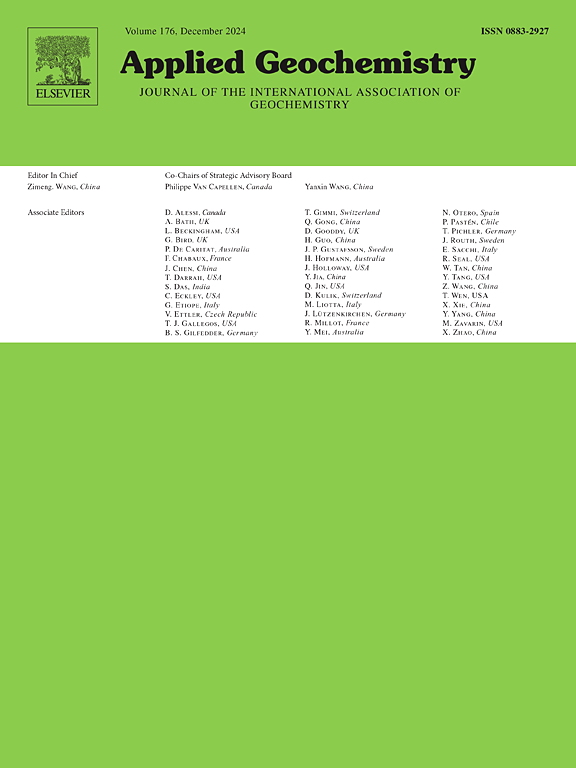New perspectives on water chemistry classification of travertine/tufa
IF 3.1
3区 地球科学
Q1 GEOCHEMISTRY & GEOPHYSICS
引用次数: 0
Abstract
If travertine/tufa is a solidified carrier of information records, karst water is the most important transport carrier of such information. In this study, we investigate the water chemistry of partial travertine/tufa around the world. Based on the better linear relationship between Ca2+ and HCO3−, the classification view of Ca2+-biased and HCO3−-biased types is proposed. Ca2+-biased is defined as a high Ca2+ concentration compared to the theoretical value of the chemical formula for Ca(HCO3)2, while HCO3−-biased is defined as a high HCO3− concentration compared to the theoretical value of the chemical formula for Ca(HCO3)2. By comparing the concentrations of Ca2+ and HCO3− in hot and cold spring travertine/tufa around the world, the relationship between Ca2+-biased and HCO3−-biased type is described, providing reference for the classification research of travertine/tufa.
石灰华/凝灰岩水化学分类新进展
如果说钙华/凝灰岩是信息记录的固化载体,那么岩溶水就是这些信息最重要的运输载体。在这项研究中,我们研究了世界各地部分石灰华/凝灰岩的水化学。基于Ca2+和HCO3−之间较好的线性关系,提出了Ca2+偏置型和HCO3−偏置型的分类观点。Ca2+偏置被定义为与Ca(HCO3)2化学式的理论值相比,Ca2+浓度较高,而HCO3−偏置被定义为与Ca(HCO3)2化学式的理论值相比,HCO3−浓度较高。通过比较世界各地冷泉钙华/凝灰岩中Ca2+和HCO3−的浓度,描述钙+偏型和HCO3−偏型之间的关系,为钙华/凝灰岩的分类研究提供参考。
本文章由计算机程序翻译,如有差异,请以英文原文为准。
求助全文
约1分钟内获得全文
求助全文
来源期刊

Applied Geochemistry
地学-地球化学与地球物理
CiteScore
6.10
自引率
8.80%
发文量
272
审稿时长
65 days
期刊介绍:
Applied Geochemistry is an international journal devoted to publication of original research papers, rapid research communications and selected review papers in geochemistry and urban geochemistry which have some practical application to an aspect of human endeavour, such as the preservation of the environment, health, waste disposal and the search for resources. Papers on applications of inorganic, organic and isotope geochemistry and geochemical processes are therefore welcome provided they meet the main criterion. Spatial and temporal monitoring case studies are only of interest to our international readership if they present new ideas of broad application.
Topics covered include: (1) Environmental geochemistry (including natural and anthropogenic aspects, and protection and remediation strategies); (2) Hydrogeochemistry (surface and groundwater); (3) Medical (urban) geochemistry; (4) The search for energy resources (in particular unconventional oil and gas or emerging metal resources); (5) Energy exploitation (in particular geothermal energy and CCS); (6) Upgrading of energy and mineral resources where there is a direct geochemical application; and (7) Waste disposal, including nuclear waste disposal.
 求助内容:
求助内容: 应助结果提醒方式:
应助结果提醒方式:


